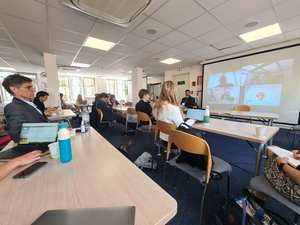Biodiversity credits: risks and opportunities

It’s been great to be part of this week’s discussions on “biodiversity credits”, both in person at the Coalition for Private Investment in Conservation in Paris, hosted by UNEP-FI, and virtually at the UNEP Oceans Forum in Lisbon.
There is clearly a lot of excitement around biodiversity credits, with at least a dozen new initiatives underway or getting started. The hope is that well-designed credit systems will help connect the surge in corporate interest in biodiversity with field-based conservation to unlock new and enhanced funding streams. Credits schemes could achieve this by significantly reducing the transaction costs for companies wanting to invest in positive biodiversity outcomes and by guiding them to the most impactful investments.
But there is also a huge risk.

The biodiversity credits schemes being developed have very different approaches and objectives. This can create confusion in the marketplace, but also, if schemes do not deliver, both for biodiversity and for people, there is a risk of tarnishing the entire concept, as arguably happened previously for carbon credits.
To avoid this, and for biodiversity credits to deliver effectively for nature, we need to recognise that any credit system needs to provide both:
- Local-scale integrity – ensuring that biodiversity gains are actually and demonstrably delivered and maintained, in a socially equitable, rights-based way; AND
-
System-scale integrity – ensuring biodiversity credits deliver outcomes that contribute to achieving societal goals and are not used to divert companies’ attention from avoiding and reducing negative impacts in the first place, such as through first implementing deforestation- and conversion-free supply chains.
These are thorny challenges. But some recent innovations provide a starting point. New metrics and data sources like STAR, can help provide standardised and rigorous assessments of the relative value of conservation actions in different places. And the Science-based Targets Network (SBTN) is working on a framework that will help address the broader system-scale integrity.
So, key elements are falling into place, but for biodiversity credit schemes to actually result in good outcomes for the planet, for people and for business, we need to:
- Start by clearly specifying the intended outcomes, as these inform technical design choices such the choice of metrics and measurement approaches
-
Incorporate social considerations right from the start – credit schemes need to be built around an equitable and rights based approach, rather than having social safeguards as an after-thought.
- Build from the experience and lessons learned from biodiversity offsets, high-integrity carbon credits and payments for ecosystem services (PES) – there is considerable overlap in the types of challenges biodiversity credits need to address and so plenty to build from
- Incorporate lessons from the fast-innovating and increasingly robust practices of systematically evaluating conservation outcomes.
So exciting times, but many challenges ahead. Watch for more details soon from TBCers Robin Loveridge and Niak Koh.
The original version of this article first appeared here.
Categories: Financial Services, Biodiversity Accounting, Biodiversity Strategy, Nature Positive, No Net Loss and Net Positive Impact, Biodiversity Risk and Opportunity
Business & biodiversity
Join our mailing list to get the latest developments in business and biodiversity

